

Subscribe to EcoJustice Radio:
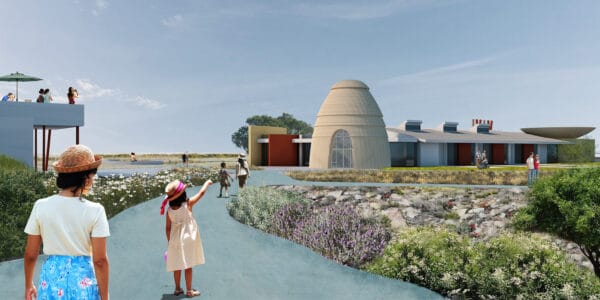

Regenerative Architecture: Nature-Based Integrated Design
On this show, we discuss how we can revolutionize architecture and landscape design by emulating Nature’s genius. Our guest, Ecological Architect Carl Welty, paints a picture of ancient cities oriented to the sun’s movements, capturing its energy without machines.
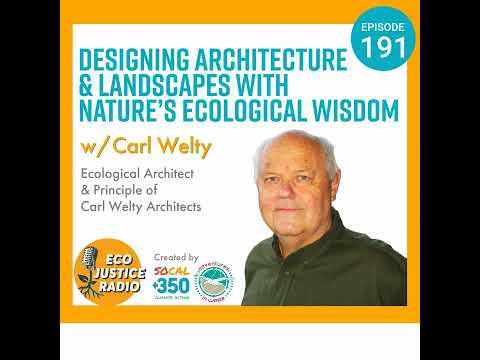
Watch this video on YouTube
Modern city design often ignores the natural context, the flow of water, sensitive ecological habitats, in favor of geometric patterns – with problematic implications for the complex web of nature’s closed-loop systems. Carl Welty sees solutions to our climate and environmental messes through ecological design.
STORY: Passive-Solar Greenhouse-Wrapped Nature House in Sweden
Employing simple passive solar design strategies like orienting buildings south, using overhangs and thermal mass, makes homes and offices 50% to 80% more efficient while costing the same.
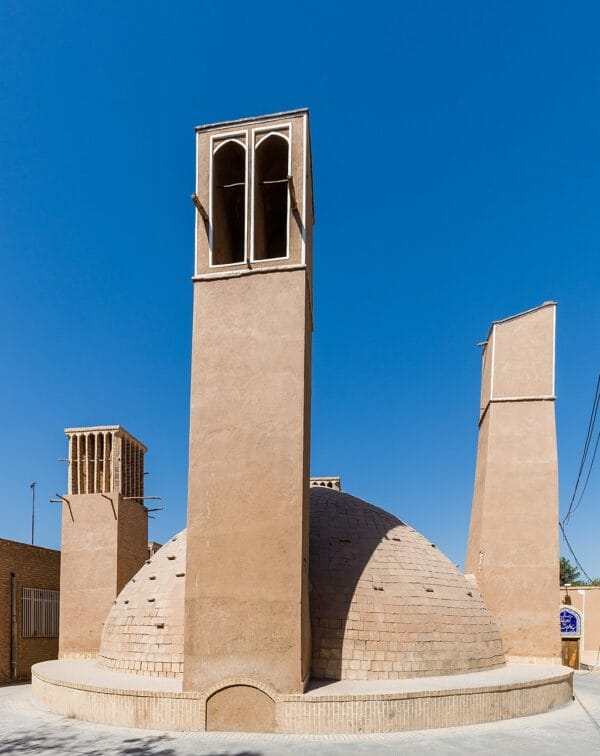

What Is Regenerative Design?
Regenerative architecture is a design approach that aims to renew, restore, and enhance the natural environment, rather than deplete or degrade it. It is based on the principles of ecology, biomimicry, and systems thinking. Regenerative architecture is not a new concept, but it has gained more attention in recent years due to the growing awareness of the environmental and social impacts of conventional building practices.
In fact, timeless techniques from ancient and Indigenous societies that mimic Nature’s design offer a resilience that is key to a truly sustainable, regenerative architecture. Thus we can build communities that generate – instead of consume – more resources (energy, water, and building materials), and at the same time restore native habitat.
One of the earliest examples of regenerative architecture in antiquity is the Great Stupa at Sanchi, India. Built in the 3rd century BCE, the stupa is a large hemispherical mound that contains relics of the Buddha. The stupa is surrounded by a stone railing and four gateways, decorated with intricate carvings of scenes from Buddhist mythology. The stupa is designed to harmonize with the natural landscape, using local materials and techniques. The stupa also serves as a spiritual center, attracting pilgrims and visitors from all over the world.
Another example of regenerative architecture in antiquity is the Hanging Gardens of Babylon, in modern-day Iraq. According to ancient accounts of the Hellenic Culture, the gardens were built by King Nebuchadnezzar II in the 6th century BCE, as a gift for his wife Amytis, who missed the green hills of her homeland of Medes in today’s Iran. The gardens were composed of terraces of plants and trees, supported by stone columns and arches, all resembling a large green mountain constructed of mud bricks. The gardens were irrigated by a complex system of pumps, canals, and aqueducts, using water from the nearby Euphrates River. Considered on of the Seven Wonders of the World, the gardens were not only a marvel of engineering, but also a symbol of fertility and abundance in a harsh desert environment.
These are just two examples of how ancient civilizations used regenerative architecture to create buildings that were both functional and beautiful, while respecting and enhancing the natural environment. Regenerative architecture is not a matter of style or aesthetics, but a matter of ethics and responsibility. It is a way of designing buildings that are not only sustainable, but also regenerative, meaning that they contribute to the health and well-being of the planet and its inhabitants.
STORY: Earthship Biotecture: Self-Sufficient, Off-the-Grid Communities
For an extended interview and other benefits, become an EcoJustice Radio patron at https://www.patreon.com/ecojusticeradio
Interview Excerpts on Regenerative Passive Solar Architecture
Nature Based Design involves designing buildings to work with local climate
Jack Eidt: So a lot of your work is focused on, how you call it the zero energy architecture. can you talk about solar oriented communities from antiquity?
Carl Welty: Yes, when one looks at ancient cultures, there’s a clear pattern that, before the modern era, and this is universal from ancient Greece, Rome, China, India, Central America that, there’s just a consistent pattern that cities were designed to be oriented towards the sun. And in short, these people had to do it because they could not use what we think of as free energy pumped from the ground (fossil fuels). And because they did not have that free energy from the ground or cheap energy from the ground, they had to devise very clever solutions that provided thermal comfort without using any of what we think of as the energy today.
For me, the idea is that these great civilizations from thousands of years ago, they lived in very harsh climates, but they were able to mitigate that harsh climate with smart design. I offer the challenge that we can learn from those lessons to build communities and buildings today that, provide that thermal comfort without using any energy.
Jack Eidt: Yeah, it’s really interesting how ecological design is centered on learning or relearning, from the land, from the plant and animal life, from the water flow that happens on the land, and most importantly, from traditional or Indigenous inhabitants. Once again, it seems obvious, but why is this not obvious? We’re going to get into that question on a more specific level, but as a general level.
STORY: Biotonomy: Designing Nature-Based Autonomous Buildings and Cities
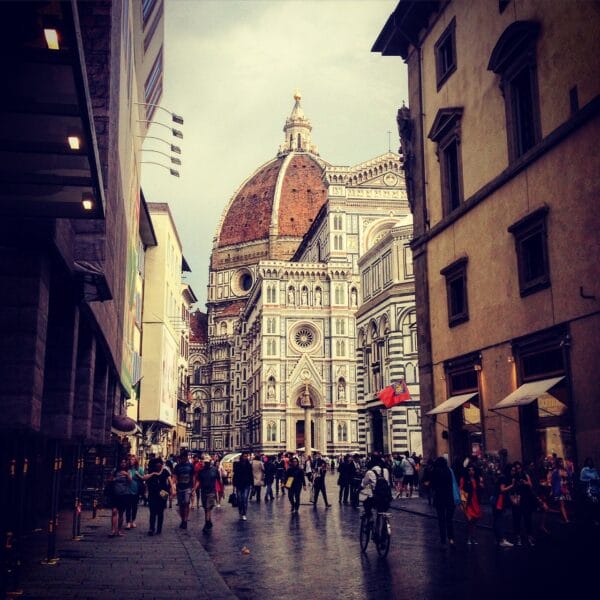

Carl Welty: Add to that is that, I’m old enough to hook onto school in the late 70s or early 80s, and was exposed to this extraordinary work that was being done in the 70s, what we now call passive solar. So there were a few insightful individuals from that era, and I had the privilege of studying with some of them in San Luis Obispo. So there were a few wise people who realized that where we were going if we were to continue our dependence upon oil. And they started to think about how to build more energy efficient buildings, but they did it without solar panels, without these more advanced technologies that we depend upon today. And they reached out to ancient history to learn these lessons. But they modernized them. And they proved over and over, had proven over and over again that these lessons from ancient history are the simple process of orienting a building correctly and working with nature, continues to produce buildings that are significantly more efficient than what we can produce with our advanced technologies. Both significant in that they reduce energy, but they also require less resources to construct.
Radial perspective has had enormous impact on architecture and urban design
Jack Eidt: So explain to us what went on in European history. A lot of your research and understanding is looking at how we, this western model, which has been placed over the land to create what we now know today as the modern city. Where did we go wrong with this going pretty way back?
Carl Welty: Well, this modern city, or our modern world is shaped by many things, but as an architect, you, obviously in architecture school in particular. So I like to tell this this just this quick story, is that so, in architecture school, we’re taught to draw perspectives, and it’s sort of classic Renaissance linear perspective, but we’re also taught that this is how we see the world. This is not just an artistic idea, but it’s like, fact. It’s like God gave us this. It’s a God given kind of, rational or system that’s given to us. But from reading perhaps too much history for an architecture student, I came across this great point that the rules that we’ve been taught how to draw perspectives was invented in 1413, or it was codified in 1413 by Brunelleschi, a sort of important Renaissance architect. So, for me, I realized, so if this was invented by one person, then it’s not given to us by God, but it’s a conceptual framework that it’s from us. And we could say much more about that. But specifically, its impact on art and architecture is obvious, and I think quite so.
STORY: ZeroHouz: Ditching Fossil Fuels for a Zero Emissions Home
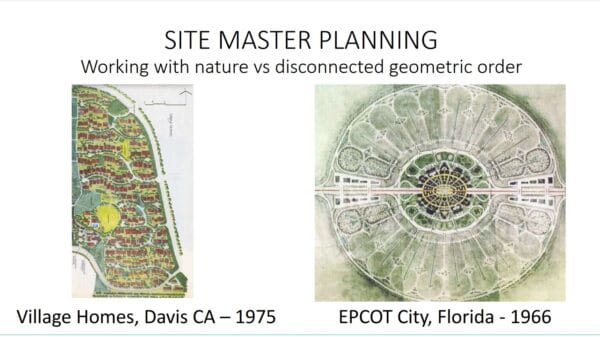
Once Brunelleschi invented, established these rules of perspective that we continue to use today, they had a direct impact on art, which is the art that we call the Renaissance art, but it’s also had an enormous impact on architecture and urban design. So what we think of as a beautiful city like Paris, the boulevards and the boulevards with buildings that are the same height on each side, and, an avenue with an object at the end, those ideas of a beautiful city come from the art from the 1400s. There was specifically a series of paintings called the Paintings of the Ideal City. So the, very idea of a beautiful city comes from these art ideas.
But from there, when we get in the habit of designing cities and communities based on a geometric pattern that’s overlaid over Nature, but in a way that ignores, like, for me, a really extreme example is the radial design, like in Epcot Center from Disney. So you have this radial, most like, carpet design that’s overlaid over Nature without any consideration for the topography or how the sun moves through the sky.
Jack Eidt: Yeah. And that radial design is found in a lot of, US. Cities. Ah, I know that Detroit was originally designed with that radial sense, right. Coming from the river there, going outward. Washington, DC. I think.
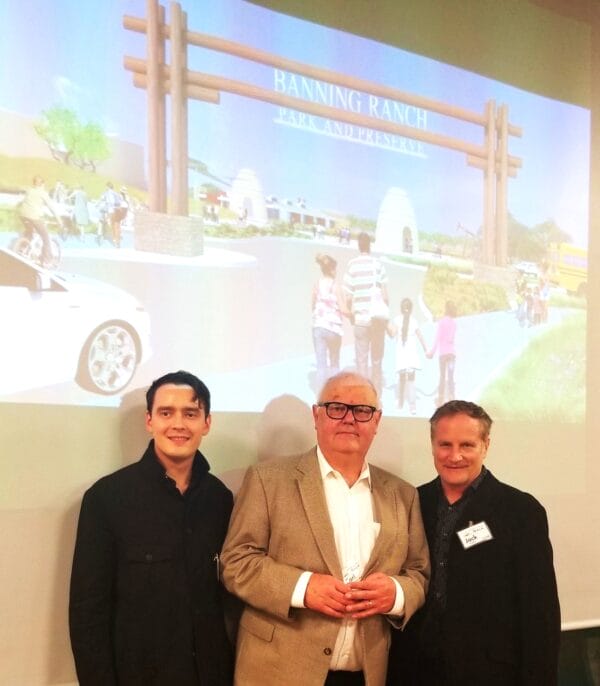

Carl Welty. Ecological Architect and Principal of Carl Welty Architects, has over 35 years of experience in the field of architecture and is based in Southern California. Carl’s experience includes projects with difficult sites and complex structural requirements; a passive solar house that is Certified LEED Platinum; a Water Education campus that embodies important and timely water issues. He designs buildings that are twice as energy-efficient as typical green buildings by incorporating simple, time-tested, climate-appropriate design principles.
Jack Eidt is an urban planner, environmental journalist, and climate organizer, as well as award-winning fiction writer. He is Co-Founder of SoCal 350 Climate Action and Executive Producer of EcoJustice Radio. He is also Founder and Publisher of WilderUtopia, a website dedicated to the question of Earth sustainability, finding society-level solutions to environmental, community, economic, transportation and energy needs.
Podcast Website: http://ecojusticeradio.org/
Podcast Blog: https://www.wilderutopia.com/category/ecojustice-radio/
Support the Podcast: Patreon https://www.patreon.com/ecojusticeradio
PayPal https://www.paypal.com/donate/?hosted_button_id=LBGXTRM292TFC&source=url
Executive Producer and Host: Jack Eidt
Engineer and Original Music: Blake Quake Beats
Episode 191
Updated 12 February 2025

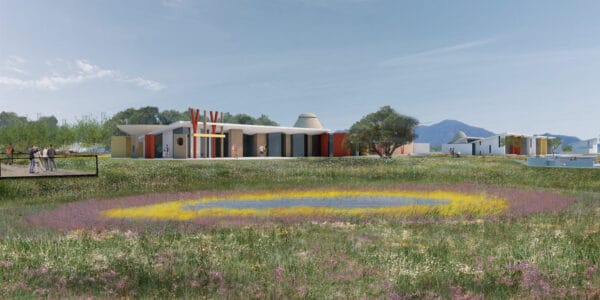


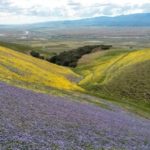


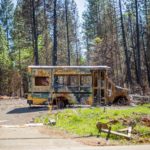
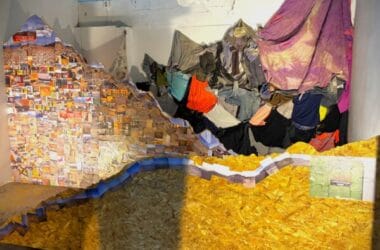





Pingback: Earthship Biotecture: Self-Sufficient, Off-Grid Communities - WilderUtopia
Pingback: Biotonomy: Designing Nature Autonomous Buildings - WilderUtopia
Pingback: Dream of a New World: Art's Role in Societal Change - WilderUtopia
Pingback: Emulating Nature's Wisdom: The Biomimicry Blueprint - WilderUtopia